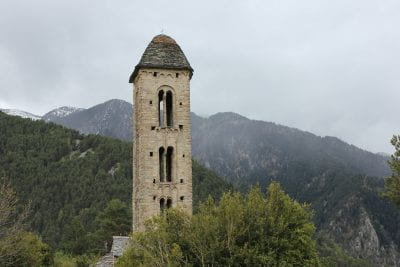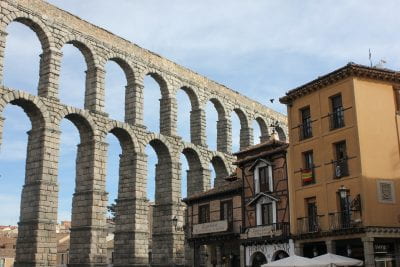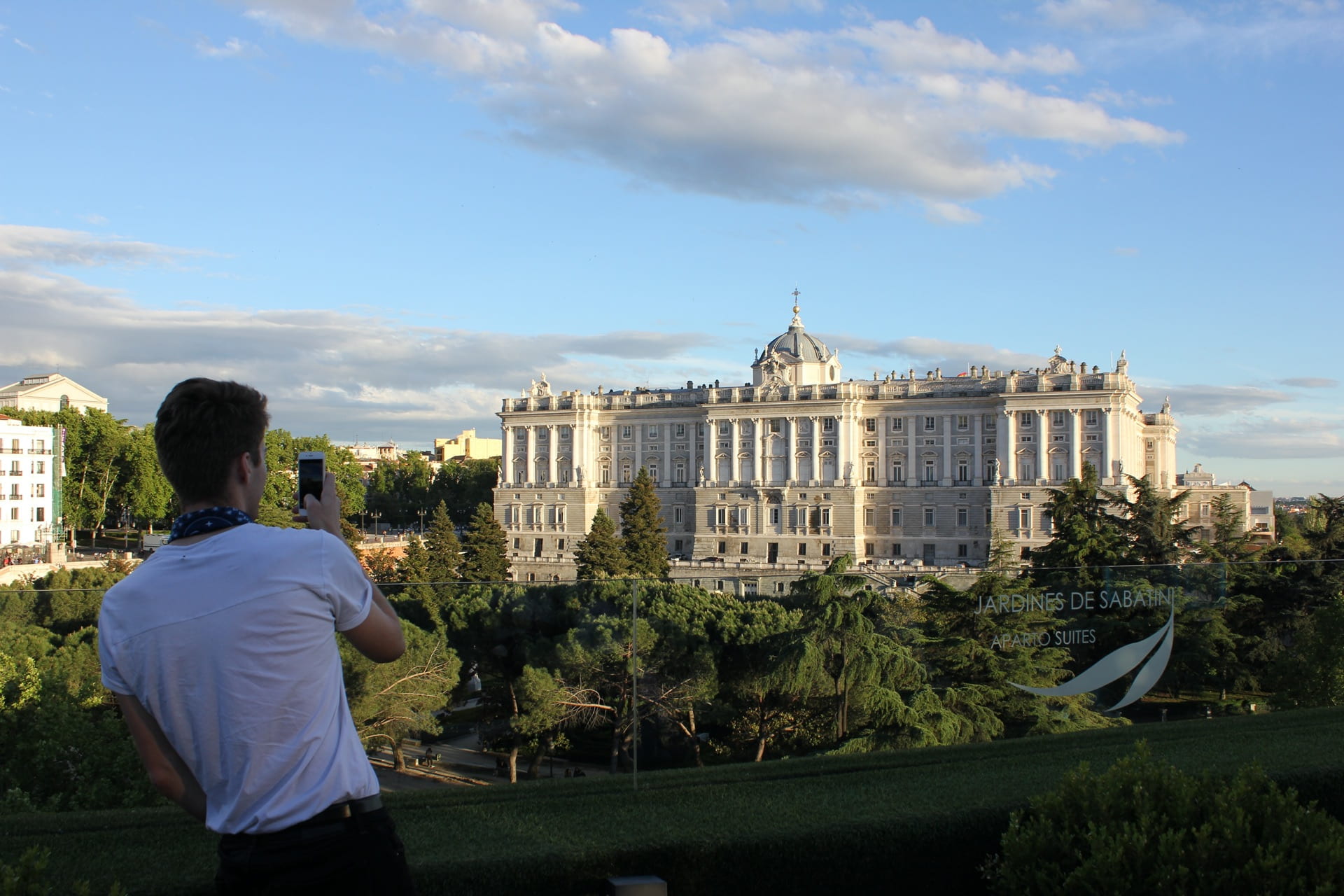Political science and African & African American studies double major Maxwell Carter spent a semester in Spain last year — here he writes of his trip through Catalonia, where a separatist movement was taking center stage in regional politics. The Bodenhamer Fellow describes how valuable exploring a country’s different regions can be, highlighting the vast differences found not only from region to region, but from town to town and valley to valley, as he explores Romanesque churches, snowy mountains, and the richness of Catalan culture.
After four months of studying and living in Madrid with the CEA Study Abroad Liberal Arts & Business program at Universidad Antonio de Nebrija, and just a few days before I was scheduled to fly back to Arkansas, I found myself high up in the Pyrenees Mountains in Andorra, one of the world’s smallest countries, which is nestled between the borders of Spain and France. Even though it was mid-May, snowflakes were falling down from the mountain clouds. I was standing outside of Sant Miquel d’Engolasters, a small, nearly 1000-year-old Romanesque church overlooking the Andorran valley. After my last final in Madrid, I flew to Barcelona to meet a fellow honors student from Arkansas, and we embarked on a weeklong road trip that had led us here. After leaving Barcelona, we drove our way across Catalonia, a cultural region of Europe covering parts of Spain, France, and Andorra. We were hunting down Catalonian Romanesque churches, millennium-old remnants of early Catalonian culture.
During my time in Madrid, in addition to studying Spanish language and arts, I learned about European politics and the history of European political unification. In the classroom, we tracked European history from the Renaissance to the modern European Union, examining how changing socio-political forces, over centuries, brought about the political systems that exist in Europe today. We visited the office of the Delegation of Madrid, and spoke to Spanish politicians about the struggles of governing in a country that’s a part of a multi-nation federation. During my time living in Spain I was able to visit five European Union countries and two (one of them being Andorra) European countries that were not in the E.U.; in each, I got to experience first-hand the varying shades of European culture that I studied in the classroom.
One of the biggest issues to European unity is separatist movements, in which regions of countries try to declare independence. This brings me back to Catalonia. While I was in Spain, the organizers of a vote for Catalonia to declare independence from Spain were arrested, sparking huge protests from both pro- and anti-independence Spaniards, which shut down portions of the city. After witnessing first-hand the turmoil linked with this small corner of Europe, I knew I had to visit.
The road-trip across Catalonia changed my entire understanding of the country. Far from the urban buzz of Madrid, we drove through snow-capped mountains and small family farms. We met locals, some of whom spoke Spanish, some of whom spoke French, and some of whom spoke Catalan, the Catalonian language which draws elements of both Spanish and French. We explored the cobblestoned streets of villages of only a few hundred people, where the villagers had attended the same small stone churches for 900 years. We hiked across a river and up a mountain to a small church in a meadow, long-abandoned. Despite being only one small region of Spain, it was a stunningly diverse area with its own unique culture.
Outside Sant Miquel d’Engolasters, the final stop on our tour of Catalonia, amidst the snow and mountains, I reflected not just on the cultural and historical richness of Catalonia, but of all the parts of Spain that I visited during my four months in Spain. In Cadiz, I learned to surf along the shore of a Spanish city founded by the Phoenicians 3000 years ago, long before the idea of ‘Spain’ existed. In Seville, I wandered the halls of the Royal Alcazar, a stunning palace designed by Spanish Christians, Jews, and Muslims working together to incorporate architectural elements of each culture. In Segovia, I walked under an ancient Roman aqueduct. And in Madrid, on a casual walk through the city, my friends and I found ourselves in the Women’s March on International Women’s Day alongside hundreds of thousands of Madrid’s citizens.
In each of these places, I was met with different cultures and different peoples. In this one country, each city, each village, each region had its own culture and its own history. The people of Spain are not all homogenous; they are equally, if not more diverse than my own country. The rich local histories and cultural diversity that I found across Spain is perhaps the greatest takeaway from my time abroad. To students about to go abroad, I say this: don’t be afraid to stray from the beaten path. Don’t be afraid to leave the cities and venture out into the countryside or the mountains. As I discovered in this final adventure through Catalonia, sometimes the greatest secrets of a country can be found hiding in the tiny, remote villages and 1000-year-old churches, far from where one would think to look.





